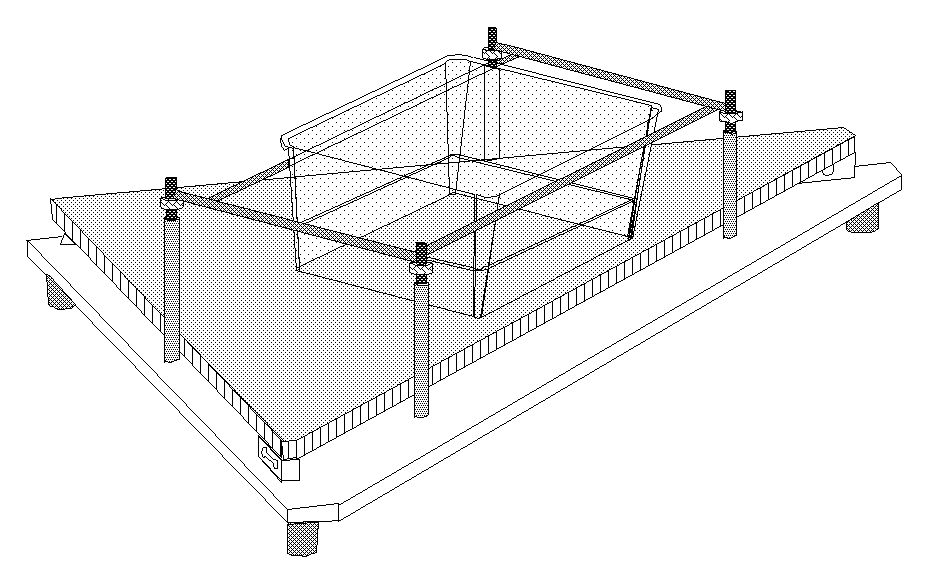
LABORAS: automated behaviour classification of laboratory animals
R.J.A. Bulthuis1, A.F. Bergman1, F. Schlingmann2, J. Tolboom2, R. Remie2, H.A. van de Weerd3, P.L.P. van Loo3, V. Baumans3 and L.F.M. van Zutphen3
1 Metris System Engineering, Hoofddorp, The Netherlands
2 Department of Laboratory Animal Science, Solvay Pharmaceuticals b.v., Weesp, The Netherlands
3 Department of Laboratory Animal Science, Utrecht University, Utrecht, The Netherlands
At present, the analysis of laboratory animal behaviour is based mainly on video recording followed by visual observation or computerised screening of the recordings. Visual observation is time-consuming and scan sampling of a proportion of frames gives only a rough indication of the actual behaviour of the animal. Metris has developed a system named LABORAS (Laboratory Animal Behaviour Observation, Registration and Analysis System) for automated classification of behavioural patterns by analysis of sensor signals induced by the animal's movements. Each of the behavioural categories locomotion, sleeping, climbing, grooming, drinking and eating is characterised by a specific and unique movement pattern which is detected by the sensors and then processed by computer into the behavioural categories. Validation experiments have indicated that the technique is accurate and the results reproducible [1, 2, 3]. The system has several advantages, e.g. no visual observation needed, reduction of time needed for behavioural research and a flexible time window. The system is suitable for mice and rats.
Basically, LABORAS consists of a sensing platform, a signal conditioning and data acquisition device and software for administration, control and behaviour classification.
Sensing platform
The sensing platform (Fig. 1) is constructed of low-mass material and positioned on two
orthogonally-placed sensors and a third, fixed point. The cage with the laboratory animal
is placed at a marked position . The platform is designed to accommodate Macrolon types II
and III cages for tests with mice and rats, respectively. The sensors are placed so that
all movements are optimally detected and the approximate location of the animal can also be
determined. To reduce the inertia of the platform and to enable the detection of climbing
behaviour, the wire top and food hopper is mechanically separated from the lower part of
the cage.

Signal conditioning and data acquisition device
Each sensor transforms the mechanical vibration into electrical signals which are filtered
and amplified. Subsequently, the signals are sampled and stored on the computer's hard disk
for later processing. Up to eight platforms can operate simultaneously.
Software for administration, control and classification
There are three software modules:
Several LABORAS systems have accumulated an amount of data which is equivalent to more than 2500 h of experiment time. For validation purposes a setup with 4 platforms was used, each housing one animal. Two tests were performed, one with mice and one with rats, each lasting 48 h. To evaluate the performance of LABORAS, different strains (C57BL and BALB/c mice; Wistar and Sprague Dawley rats) and sexes were used. Both tests were recorded using a video camera and a time-lapse video recorder for each platform. Each videotape was scored by three different observers independently. The scoring method applied was scan sampling with a sampling rate of once every 15 s.
The tests with mice show good results. For all four mice and four rats in the test LABORAS differentiated between climbing (mice only), sleeping (resting), locomotion, grooming, eating and drinking. On average the correlation between human observers and LABORAS appeared to be better than 85% [2, 3]. It can be concluded that LABORAS offers a new efficient and reliable method for automated behaviour classification and position tracking of small rodents.

Poster presented at Measuring Behavior '98, 2nd International Conference on Methods and Techniques in Behavioral Research, 18-21 August 1998, Groningen, The Netherlands